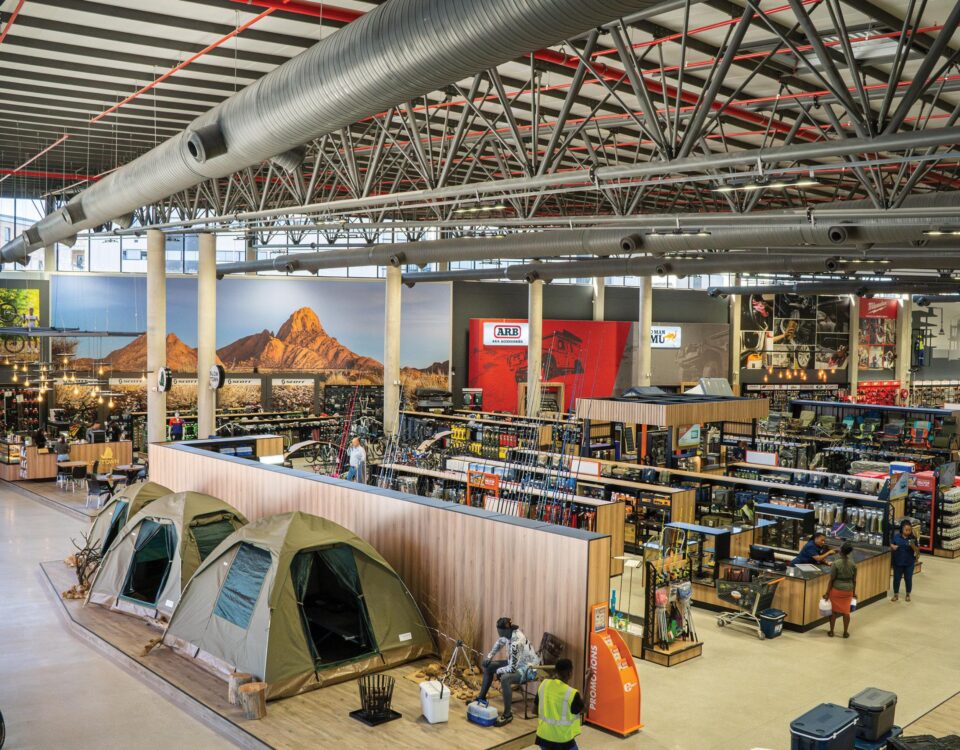Bird’s-eye view – Rüppell’s Parrot
August 31, 2012Namib-Naukluft Hiking Trail – tackling one of Africa’s toughest hiking trails
August 31, 2012Text and photos by ©Sharri Whiting De Masi – All photographs copyright of the author
Re-printed with permission of the author
Windhoek is a paradise for handicraft shoppers. The Namibian Craft Centre alone is home to dozens of independent dealers who offer handmade, hand-carved, hand-woven, hand-stitched and hand-painted items from all over the country.
Outdoor merchants sell a variety of wooden statues and ornaments, bowls and implements, while the shops along Independence Avenue stock a wide array of products created by regional artisans. In rural areas, a grove of trees may be a workshop, producing merchandise that is sold in the capital. With such a broad selection, it’s difficult to choose between the spectacularly woven baskets in the Craft Centre, and the painstakingly carved animals at an outdoor market.
Over the years, Namibian artists have banded together in both informal and formal organisations to sell their wares to the growing tourist market. Necklaces are fashioned by Himba women in the north west, karakul rugs are woven by men and women in the south, ostrich-eggshell jewellery is crafted in Bushman villages and embroidered linens are created on isolated farms. Not one of these products is an anonymous, mass-produced item – each is the carefully crafted work of an individual.
The craft-makers are often supported by NGOs, which provide organisation and training, distribution and marketing. The end results can be purchased in shops in Windhoek, Swakopmund and other towns, as well as at lodges, on the roadside, and even abroad. There is an effort to price the pieces fairly, to reflect the work of their makers. After all, when these items leave Namibia to go to Rome, London or New York, they take the spirit of the country and the vision of the artists with them. Each Namibian handicraft is indelibly marked by the unique hands that made it.
But where do these thousands of products come from? Whose hands are actually making these handcrafted treasures? With craft projects going on all over Namibia, there are thousands of hands working on them. A good example is the Mashi Craft Centre, established in 1996 near Katima Mulilo in the Caprivi Region. Ten years ago, only seven women sold their baskets and palm mats through Mashi. Today, 330 women and five men gross almost N$100 000 annually. The income the craft-makers earn adds significantly to the standard of living in Caprivi.
These craftspeople create their products at home, in addition to sending their children to school, preparing meals, housecleaning and taking care of their animals. The money they make is often used to buy books and school uniforms, improve their homes and buy more livestock. The income can be the difference between extreme poverty and a marginal standard of living.
In the beginning, the Mashi craft-makers didn’t come armed with financial, marketing and organisational skills – what they had to offer was traditional methods of basket and mat weaving, talents which would be lost if not passed along to the next generation. They knew how to go out and find the palm leaves and natural dyes they needed, but they didn’t know how to find markets for their products. In stepped Rössing Foundation, an organisation established to promote and market rural Namibian crafts, and began to stock the crafts at their Mud Hut kiosk in the Craft Centre in Windhoek. Seven years ago the Integrated Rural Development and Nature Conservation (IRDNC) organisation also became involved. The IRDNC’s objectives are to assist in economic development, promote a cultural revival, empower local women, and teach the artists the management side of their business.
The IRDNC staff, Candia Diggle, Denise Fairlane and Richard Diggle, have trained local people, such as Mashi Craft Centre store manager Peggy Tutalife, in the areas of inventory management, quality control and the management and finance skills the co-operative needs to continue to grow. By organising the craft-makers into what are now eleven groups, the Mashi Crafts Centre enables marginalised workers to receive the benefits of a community-based enterprise.
There is an increasing demand for palm mats, particularly from the hospitality industry, and the top-quality baskets are sold not only at Mashi, but also to curio shops throughout the country, including the National Art Gallery and the Namibian Craft Centre in Windhoek.
Every few days, a group of local women arrives at the Mashi headquarters, singing and laughing. They alight from a crowded bakkie and begin to unload their wares – baskets they have carefully woven at home. Each basket is graded for quality and priced accordingly. The artists receive payment on a monthly basis.
Their inspiration is the extraordinary baraquana basket with its integrated handle, woven according to an age-old Bushman technique. At the time Mashi was organised, there was only one ninety-year-old San woman who remembered the special skills required to make the baraquana. She was encouraged to teach other craftswomen, and now her legacy has become a revitalised tradition and a flourishing trade that extends beyond Namibia to galleries in major cities of the world.
Several years ago another craft centre, the Ngoma Market, emerged in the Caprivi Region near the Botswana border as yet another example of women marketing and selling pottery made by artisans in surrounding villages. Still largely undiscovered by shoppers, the aim with this small store is to offer the same kind of opportunity to locals as the Mashi Craft Centre.
This article appeared in the Feb/March ‘06 edition of Travel News Namibia.

